Forestry Business and Economics: Strategies for Sustainable Growth
- August 23, 2024
- 0 comment
Forestry is a cornerstone of the global economy, providing essential resources, employment, and ecological services. However, the business and economic dimensions of forestry extend far beyond timber production.
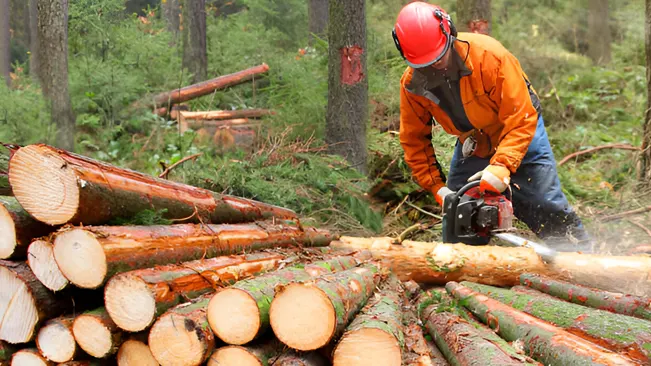
This exploration examines the essential facets of forestry business and economics, providing insights into forest management, market dynamics, investment opportunities, and the impact of policies and regulations.
What is Forestry Business and Economics?
Forestry Business and Economics involves managing forest resources to achieve both economic returns and sustainability. It includes analyzing market trends, optimizing forest operations, and making strategic investments in timber, non-timber products, and carbon credits.
The sector is influenced by global demand, regulatory frameworks, and the need to balance profitability with environmental conservation. Forestry investments are long-term and resilient, often providing stable returns due to the durable nature of timber production.
Overall, it is about leveraging the economic potential of forests while maintaining their ecological health
Aspect of Forestry Business and Economics
1. Economic Principles of Forest Management
Forest management requires a careful consideration of economic principles such as cost-benefit analysis and marginal analysis. Decisions on planting, harvesting, pest management, and resource allocation all carry significant economic implications.
For instance, investments in thinning operations can improve forest health and increase long-term economic returns by enhancing the growth and quality of remaining trees.

Economic principles also guide sustainable forestry practices. By investing in conservation and restoration, forest managers can maintain ecosystem services that are essential for long-term profitability. The economic returns from these practices often outweigh the costs, making sustainability a sound financial strategy as well as an environmental one
2. Market Dynamics in Forestry
The forestry market is driven by both timber and non-timber products, with timber being the primary economic force in the industry. However, as global demand shifts and new markets emerge, non-timber forest products (NTFPs) are gaining importance, providing diverse revenue streams for forest owners.
- Timber Demand: Timber remains the dominant product, heavily used in construction, paper production, and furniture manufacturing.
- Growth of Non-Timber Forest Products (NTFPs): NTFPs, such as medicinal plants, resins, and fruits, are gaining market share and offering new revenue opportunities.
- Sustainably Sourced Timber: There is increasing consumer demand for sustainably sourced timber, influenced by environmental awareness and regulatory pressures.
- Market Volatility: The forestry market is volatile, affected by factors like climate change, political instability, and shifts in trade policies.
- Emerging Markets: Asia and Africa present significant growth potential but require careful management to prevent overexploitation.
3. Investment Opportunities in Forestry
Forestry is increasingly seen as a stable, long-term investment due to its financial returns and role in climate change mitigation. Forests, acting as carbon sinks, make forestry attractive to investors aiming to align with environmental and social goals.
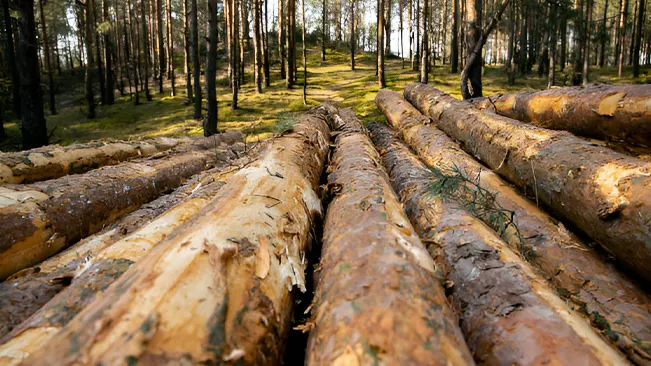
Timber provides resilience against market volatility since it can be harvested when conditions are favorable, optimizing returns. The long-term nature of forestry investments appeals particularly to institutional investors seeking stable, inflation-protected returns.
Timberland Investment
Purchasing and managing timberland is a traditional and long-term investment. Timberland generates income through the sale of harvested timber and can appreciate over time as the trees grow.
Carbon Credit Markets
Investors can participate in carbon credit programs where forests are managed for carbon sequestration. Forest owners can sell carbon credits to companies looking to offset their carbon emissions, creating a new revenue stream.
Non-Timber Forest Products (NTFPs)
Investing in the production and commercialization of non-timber forest products such as medicinal plants, resins, and berries offers diversification beyond timber and can tap into niche markets.
Reforestation and Afforestation Projects
These projects focus on planting new forests or restoring degraded ones. They generate returns from timber harvests, carbon credits, and even government incentives for environmental conservation.
Agroforestry Investments
Combining forestry with agricultural practices, agroforestry can provide diverse income streams from both timber and crops. It also enhances sustainability by improving soil health and biodiversity.
4. Supply Chain and Business Management
Effective forestry supply chain management is crucial for maximizing economic returns, encompassing operations from logging to distribution, each with its own logistical challenges. Technological advancements like GPS and drones enhance efficiency, reducing costs and improving competitiveness in the global market. Strategic planning and risk management are essential for navigating market fluctuations and ensuring long-term profitability
Table: Key Stages and Challenges in the Forestry Supply Chain
| Stage | Description | Challenges |
|---|---|---|
| Logging | Harvesting trees for timber production | High operational costs, environmental impact, regulatory compliance |
| Transportation | Moving harvested timber to processing facilities | High fuel costs, infrastructure limitations, risk of damage |
| Processing | Converting raw timber into products (e.g., lumber) | Efficiency, waste management, energy costs |
| Distribution | Delivering final products to markets or consumers | Market access, logistics, storage, and preservation |
| Waste Management | Managing by-products and residues from processing | Environmental regulations, recycling efficiency, cost management |
Risk Management Strategies
Risk management in forestry is essential for ensuring that operations remain stable and profitable despite the various challenges that the industry faces. Here’s a more detailed look at key strategies for mitigating risks in forestry:
Market Volatility
Forestry businesses face significant risks from fluctuating market prices for timber and related products. To mitigate these risks, companies can diversify their product offerings, enter into long-term contracts, and use hedging strategies to stabilize income and protect against sudden price changes.
Environmental Changes
Environmental changes, such as climate shifts and increased frequency of natural disasters, pose a major threat to forestry operations. Adaptive management, sustainable practices, and disaster preparedness are crucial strategies to enhance forest resilience and minimize the impact of these changes.
Regulatory Shifts
Regulatory shifts can drastically affect forestry operations through new laws and policies. Forestry businesses must stay informed and engaged with policymakers, while also ensuring compliance with current regulations to avoid penalties and maintain smooth operations.
5. Policy and Regulation Impact
Government policies and regulations significantly influence forestry economics. Environmental regulations, for instance, can impose additional costs on forestry operations but also create opportunities for certification and access to premium markets.
Understanding and navigating these regulations are essential for forest managers and investors. International trade agreements also shape the forestry market by governing the export and import of timber and other forest products.

These agreements can open new markets or impose restrictions that affect profitability. Forest certification programs, such as those offered by the Forest Stewardship Council (FSC), provide economic incentives for sustainable management by enabling access to higher-value markets.
The Future of Forestry Business and Economics
The future of the forestry business and economics will be heavily influenced by emerging trends such as the expansion of carbon markets and the increasing impact of climate change. Forests’ role in climate mitigation is becoming more prominent, with the growing demand for carbon credits generated by conservation and restoration projects.
Climate change presents both risks and opportunities for forestry. While changing weather patterns and extreme events threaten forest health, forests themselves are crucial for climate adaptation and mitigation. Innovation will also drive the future of forestry economics, with advances in biotechnology and new business models offering pathways for sustainable growth.
Conclusion
Understanding forestry business and economics is crucial for balancing profitability with sustainability. The economic value of forests includes not only timber but also essential ecosystem services that support growth and conservation. The forestry industry faces the challenge of aligning economic goals with environmental stewardship.
By applying sound economic principles and embracing innovation, the sector can continue to thrive. The future of forestry relies on integrating financial returns with the recognition of forests’ critical role in global environmental health.
Frequently Asked Questions (FAQ’s)
- What is the forestry business and why is it important?
Forestry business involves the management, cultivation, and harvesting of forests for various products and services. It’s important because it provides essential resources, supports rural economies, and plays a crucial role in environmental sustainability. - How do economic principles apply to forest management?
Economic principles like cost-benefit analysis, marginal analysis, and risk management guide decisions in forest management, such as planting, harvesting, and conservation, to balance profitability with sustainability. - What are the main products of the forestry industry?
The primary products include timber, pulpwood, and paper, while non-timber forest products (NTFPs) like medicinal plants, resins, and fruits are also significant. - Why is sustainable forestry economically beneficial?
Sustainable forestry ensures the long-term availability of resources, supports ecosystem services like carbon sequestration, and often leads to higher market prices for certified sustainable products. - What are the investment opportunities in forestry?
Investment opportunities include timberland ownership, carbon credit markets, non-timber forest products, reforestation projects, and agroforestry. - How do government policies impact forestry economics?
Policies and regulations affect land use, forest management practices, trade, and investment decisions, influencing both costs and market access. - What are the current market trends in forestry?
Current trends include growing demand for sustainably sourced timber, the rise of NTFPs, and the influence of international trade agreements. - How does climate change affect the forestry business?
Climate change poses risks such as increased frequency of wildfires and storms but also creates opportunities through carbon credits and the need for climate-resilient forestry practices. - What role do forests play in carbon markets?
Forests act as carbon sinks, absorbing CO₂ and generating carbon credits that can be traded, providing an additional revenue stream for forest owners. - What are the challenges of balancing profitability and sustainability in forestry?
Challenges include managing costs, market volatility, regulatory compliance, and the need to protect biodiversity while ensuring economic returns.

Jordan Blake
Forestry AuthorJordan Blake is a forestry expert with over 15 years of experience in arboriculture and community education. Passionate about sustainable forest management, Jordan regularly writes for Forestry.com and Tree Care Magazine. Holding certifications in tree health assessments and urban forestry management, Jordan conducts workshops to educate the public on sustainable practices. Jordan has a degree in Environmental Science and enjoys hiking and photography in their free time.








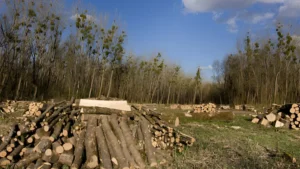
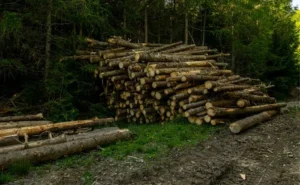


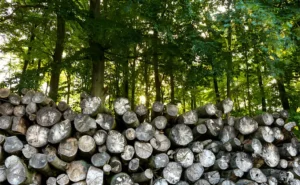
Leave your comment